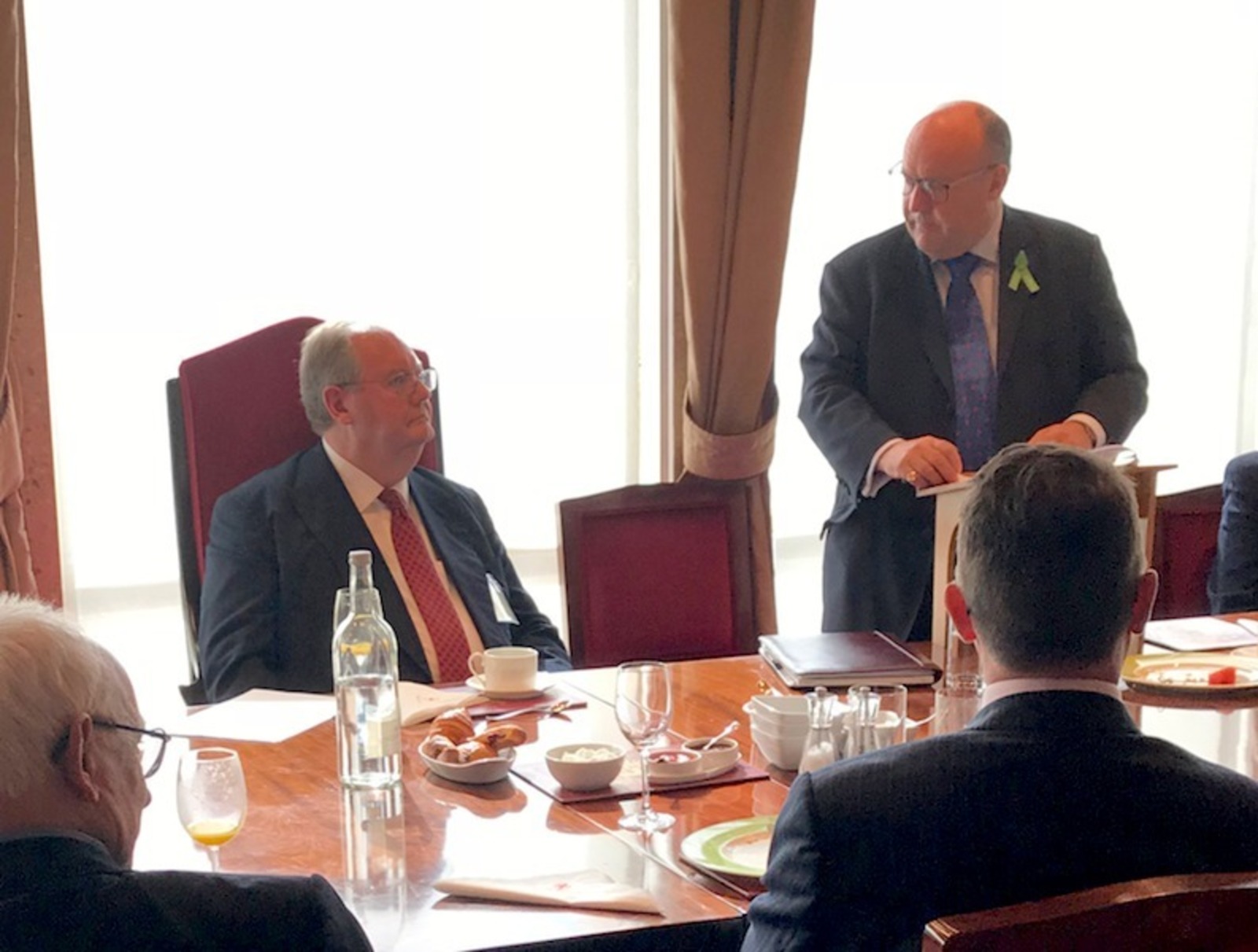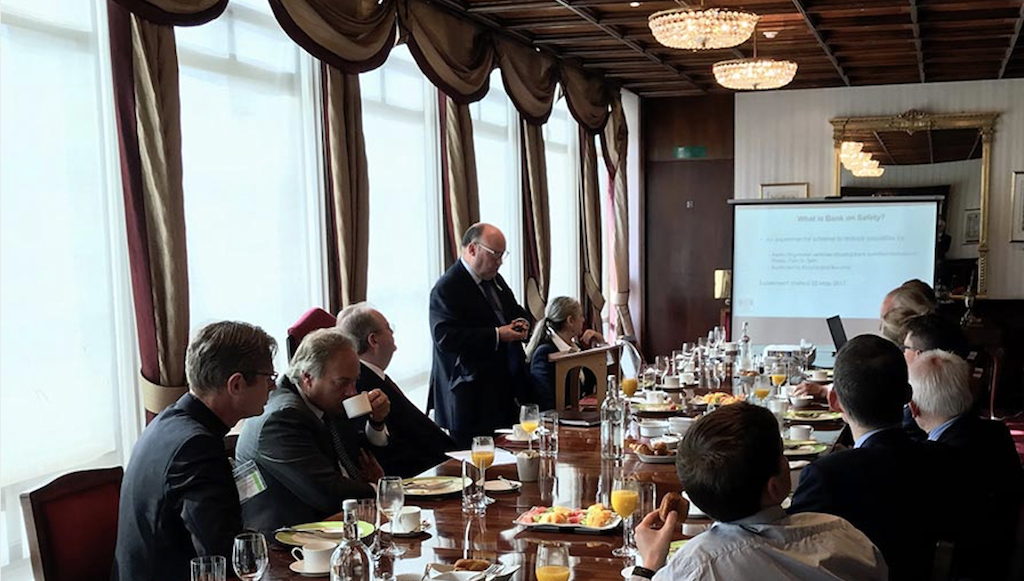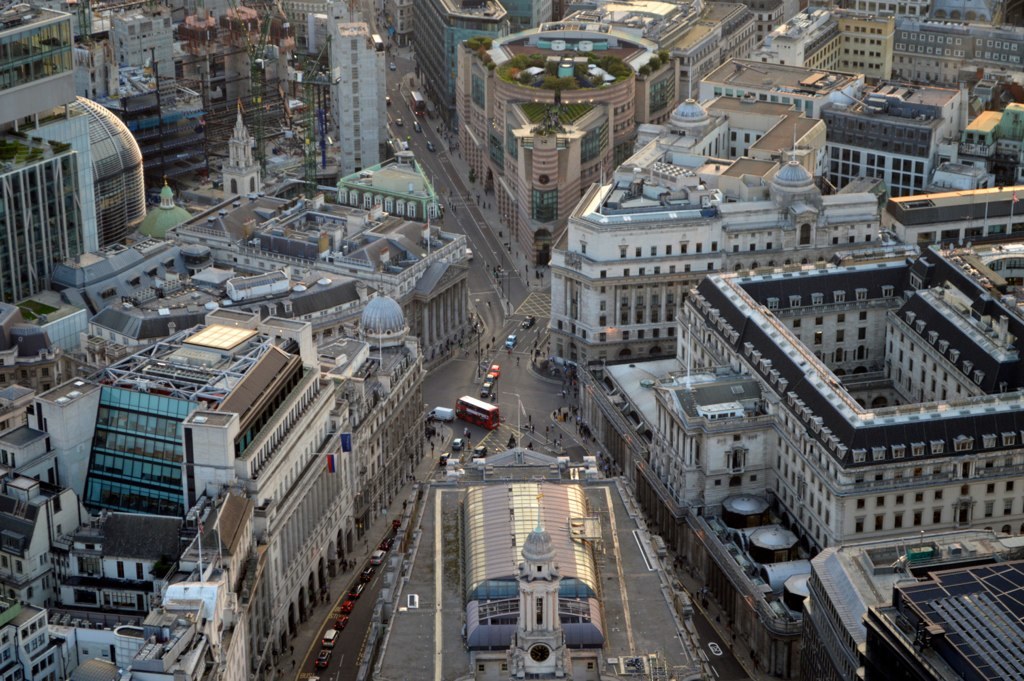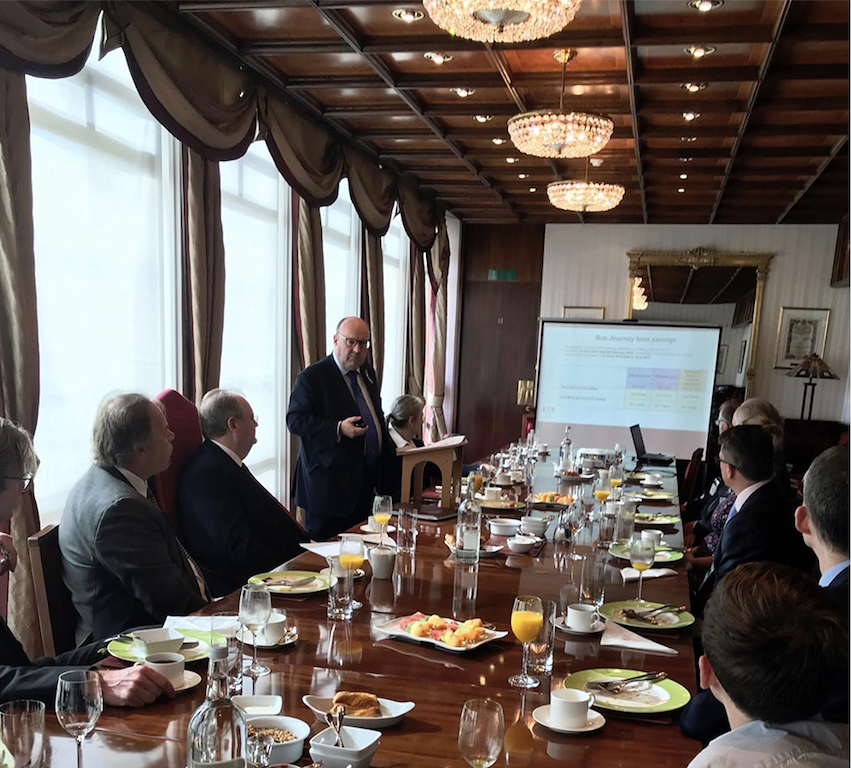21 May 2018
The Bank Junction Experiment And The Future Plan For Cheapside

I was pleased to host a breakfast with Christopher Hayward at the Members Dining Room, Guildhall, London on Friday, May 18th – as well as with many concerned individuals from the Ward of Cheap. The focus of the breakfast was the Bank Junction experiment and the future plan for Cheapside.
Christopher is Common Councilman of the City of London, Chairman of the Planning & Transportation Committee and Vice-Chairman of the Policy and Resources Committee. In addition, he is a Past Master of the Worshipful Company of Pattenmakers and a member of the Worshipful Company of Parish Clerks.
Chris is a very successful businessman who I have known for 25 years from our days in British Junior Chamber of Commerce where he became National President.
Chris was speaking on the factual background behind the current Bank Junction Experiment, the latest status and the likely future options for Cheapside. It was supported by some recent opinion research completed by my firm, Andrew Marsden Consulting.

The results of The Bank junction experiment
As you may know, Bank is a six-arm traffic junction. It is heavily used by all road users and has a high collision and casualty record that requires critical improvements. 18,000 people use Bank Junction during peak morning hours.
With 105 collisions and 118 casualties between November 2009 and 2014, almost half occurring at Bank Junction itself, it is the worst accident blackspot in the City.
Because of this, in May 2017 City decided to close the junction. Under the 18-month trial, all vehicles other than buses and bicycles are banned from Bank Junction.
The ban took place between the hours of 7am and 7pm on Mondays to Fridays. There is also restricted access to neighbouring streets and across the Ward of Cheap.

A report on the results was published by the City of London Corporation this week. Streets around the key junction in the heart of the City of London have seen casualties fall by a third since the trial of an experimental safety scheme began on 22 May last year.
The number of people killed or injured in road traffic collisions at London’s Bank junction has fallen by more than half.
The impact of the Bank Junction experiment on the businesses based in Cheap and the City
The results from our research suggest that the middle management and senior executives were of the opinion that in the early stages of the closure of Bank Junction there was an adverse impact on their business.
They stated a number of examples, such as, where senior clients arriving within minutes of each other at Heathrow had taken separate taxis and there was a difference of over an hour between the taxis arriving at their offices.
However, in recent weeks, taxi drivers have managed to find ways to avoid Bank Junction when crossing the City and businesses are experiencing less disruption.
If problems do occur, these are mainly due to Uber drivers whose satellite navigation systems have not been upgraded to display the closure of Bank Junction.
Two other main subject areas, mentioned by over 70% of respondents in the immediate area were, firstly, a broad range of traffic issues: smart traffic management; delivery vehicles, partial road and footpath closures for construction work, bus pollution, cyclists.
The second major area of concern is the disruption as result of the work on the Underground in 2020.

The breakfast with Christopher Hayward was a unique opportunity to listen to Chris, ask questions and give the Corporation their view on the issues of congestion, street safety, cycling and air quality amongst others.
It was very clear that Chris and his team at the Planning & Transportation Committee are working very closely with all parties including the City of London Police and TFL to balance the needs of all stakeholders.
A decision on whether to make the Bank Junction ban permanent will be made in the coming months.